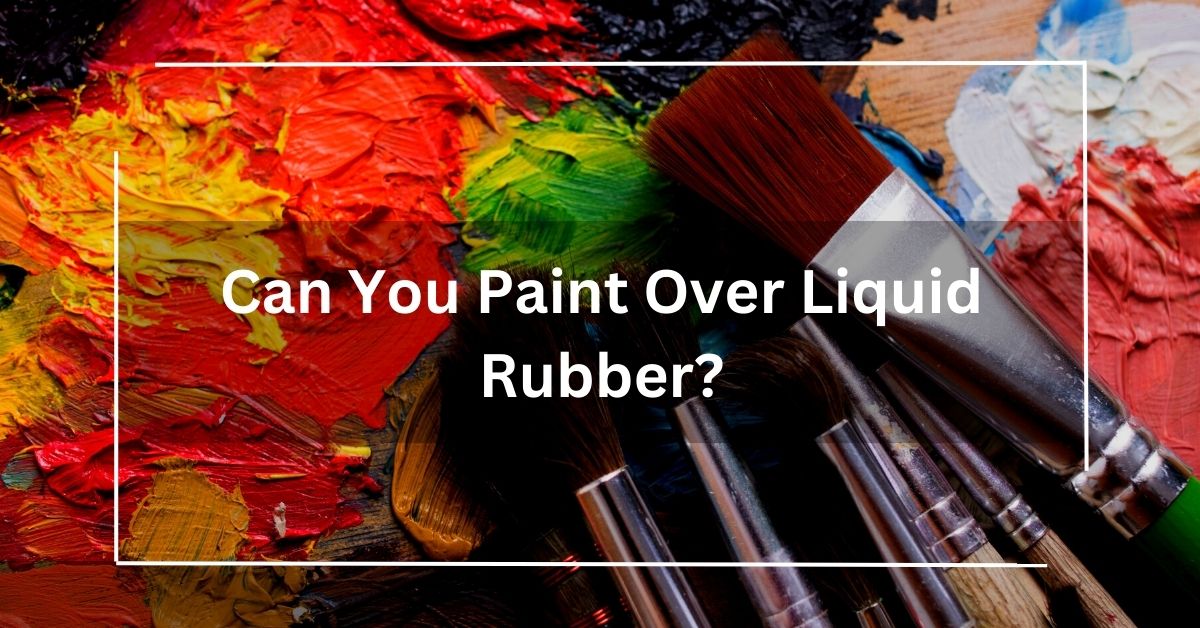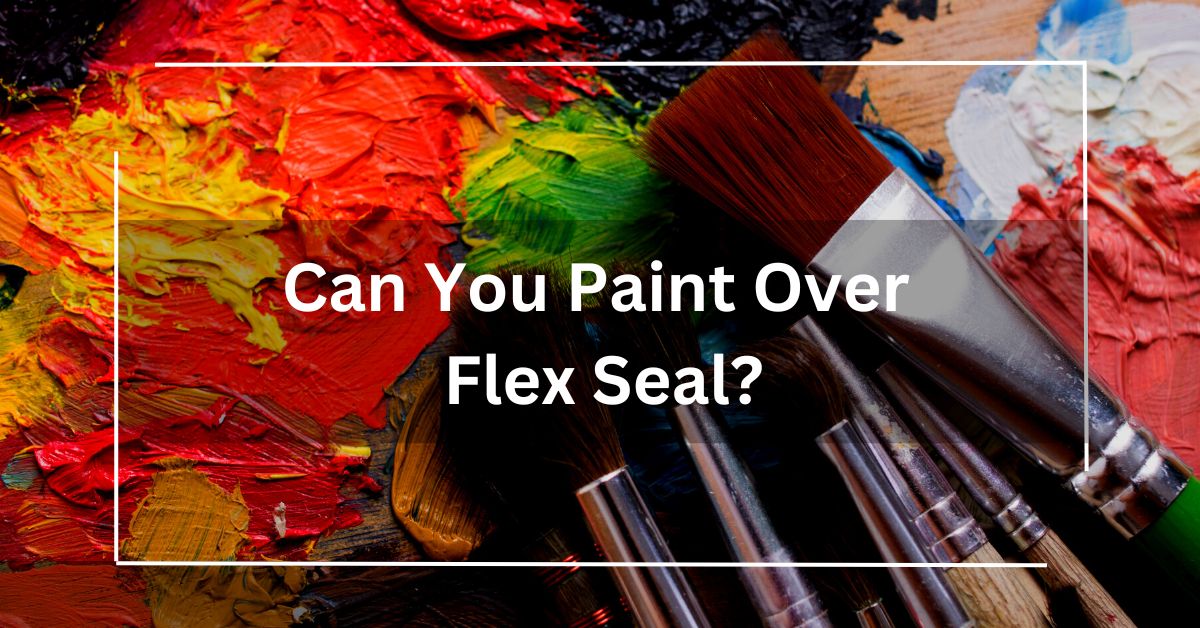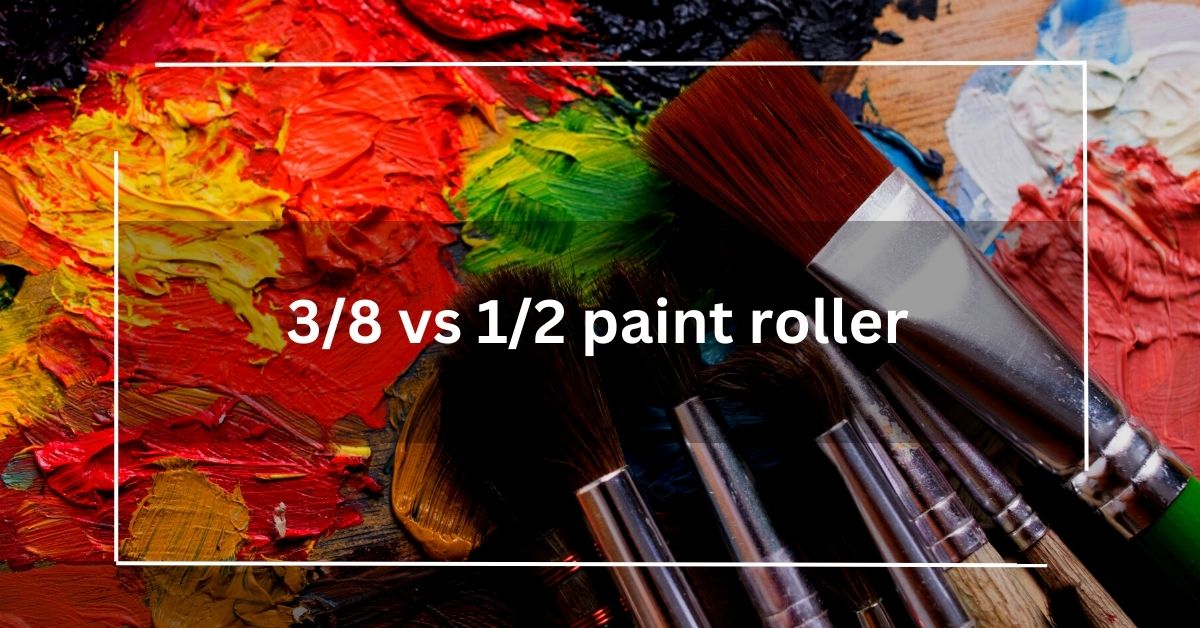Liquid rubber has gained popularity as a versatile and waterproof coating solution for various applications. From roofing to sealing, liquid rubber offers exceptional protection against leaks and water damage.
Yes, you can paint over liquid rubber, but it requires proper surface preparation, including cleaning and priming. Choosing the right paint that is compatible with rubber surfaces is essential for a successful result. Consulting with a specialist can be helpful for specific project guidance.
However, a common question arises: Can you paint over liquid rubber? In this article, we delve into the details to provide you with a clear understanding of the process, considerations, and best practices when it comes to painting over liquid rubber.
Can You Paint Over Liquid Rubber?
Yes, you can paint over liquid rubber, but there are several important factors to consider before doing so. Painting over liquid rubber can offer aesthetic benefits and even enhance the protective capabilities of the coating. However, it’s crucial to follow the right steps to ensure a successful outcome.
Steps to Paint Over Liquid Rubber:
- Surface Preparation: Clean the surface thoroughly. Remove dirt, dust, and any loose debris. A clean canvas ensures better paint adhesion.
- Paint Selection: Opt for water-based latex paint. It’s more likely to bond well with the liquid rubber surface.
- Test a Small Area: Before painting the entire surface, test the paint on a small, inconspicuous area to ensure compatibility and adhesion.
- Apply Primer (If Needed): If the liquid rubber surface is very porous, applying a suitable primer can enhance paint adhesion.
- Paint Application: Use a brush or roller to apply the paint in even coats. Follow the paint manufacturer’s recommendations for drying times between coats.
- Multiple Coats: Apply multiple thin coats of paint for better coverage and durability.
- Weather Conditions: Paint in appropriate weather conditions – mild temperatures and low humidity are ideal for optimal paint drying.
Benefits of Painting Over Liquid Rubber:
- Aesthetic Enhancement: Paint allows you to add color and style to your waterproofed surface.
- Extra Protection: A layer of paint can provide an extra barrier against UV rays and other environmental factors.
- Surface Customization: Painting over liquid rubber allows you to match the surface to your aesthetic preferences.
Factors to Consider Before Painting Over Liquid Rubber
Before you proceed with painting over liquid rubber, here are some key factors to take into account:
1. Adhesion and Compatibility
Ensure that the paint you choose is compatible with the type of liquid rubber you’ve applied. Some paints may not adhere well to rubber surfaces, leading to peeling or flaking over time. It’s recommended to opt for a paint that is specifically designed for use on rubber or flexible surfaces.
2. Surface Preparation
Proper surface preparation is essential for a durable paint job. Clean the liquid rubber surface thoroughly to remove dirt, debris, and any contaminants that might affect paint adhesion. You can use a mild detergent and water to clean the surface.
3. Primer Application
Applying a primer designed for rubber surfaces can significantly improve paint adhesion. The primer creates a bond between the liquid rubber and the paint, ensuring a longer-lasting finish. Make sure to follow the manufacturer’s instructions for primer application.
4. Paint Selection
Choose a high-quality paint that is suitable for the intended application. Acrylic paints are often a good choice for painting over liquid rubber, as they provide good adhesion and flexibility. Additionally, consider using a paint with UV protection to prevent fading and damage from sun exposure.
5. Application Method
Select the appropriate application method for the paint, whether it’s brushing, rolling, or spraying. The method you choose should ensure even coverage and a smooth finish. Follow the manufacturer’s recommendations for the best results.
6. Number of Coats
Applying multiple thin coats of paint is preferable to a single thick coat. Thin coats ensure better adhesion and prevent the paint from becoming too heavy for the rubber surface. Allow each coat to dry before applying the next.
Common Mistakes to Avoid:
- Using Incompatible Paints: Using solvent-based paints can lead to poor adhesion.
- Skipping Surface Preparation: Neglecting proper cleaning can lead to paint peeling.
Can you paint over Flex Seal liquid rubber?
Certainly! Flex Seal liquid rubber can be painted over. Before painting, make sure the Flex Seal has fully cured, which usually takes around 24 hours. Clean the surface and apply a primer compatible with rubber materials. After that, you can use regular paint to cover the Flex Seal. This helps to provide a protective layer while allowing you to customize the color as needed.
Read: Behr Paint Colors || Understanding Interior Design
Frequently Asked Questions (FAQs)
1: Can I use any type of paint on liquid rubber?
Not all paints are suitable for use on rubber surfaces. It’s important to choose a paint specifically designed for rubber or flexible materials to ensure proper adhesion and longevity.
2: Will painting over liquid rubber affect its waterproofing properties?
When done correctly, painting over liquid rubber can enhance its protective capabilities. However, it’s essential to use the right type of paint and follow proper preparation and application techniques.
3: Can I skip the primer when painting over liquid rubber?
While some paints claim to be self-priming, using a primer specifically formulated for rubber surfaces is recommended. The primer improves adhesion and ensures a more durable finish.
4: How do I clean and maintain painted liquid rubber surfaces?
Clean painted liquid rubber surfaces with a mild detergent and water solution. Avoid using abrasive cleaners or harsh chemicals that could damage the paint. Regular maintenance can help prolong the life of the paint and the underlying liquid rubber coating.
5: Can I paint over liquid rubber to change its color?
Yes, painting over liquid rubber allows you to change the color of the surface while maintaining its protective properties. Choose a paint color that complements your design preferences and the surrounding environment.
6: Can I apply multiple colors of paint over liquid rubber?
Applying multiple colors of paint can create interesting designs and patterns on the rubber surface. Ensure proper adhesion by following the steps mentioned earlier and allow each coat of paint to dry before applying the next.
Conclusion
Painting over liquid rubber can be a rewarding way to enhance both the appearance and protective qualities of your coated surfaces. By considering factors such as compatibility, surface preparation, primer application, paint selection, and proper application techniques, you can achieve a successful and long-lasting paint job. Remember to choose paints and materials that are designed for rubber surfaces, and always follow manufacturer guidelines for the best results.
Video Guide
Read More



